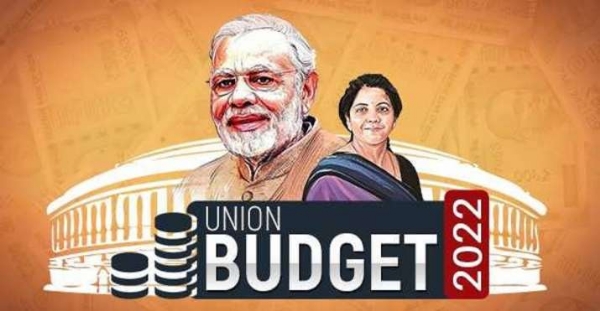Budget 2022-23: Path breaking Indeed
02 Feb 2022 16:04:17
It was the Budget day. As I do it every year, I got ready to hear the Finance Minister’s speech at 11.00 a.m. and sat before the TV expecting the Minister to go about it normally. As is usually done, the FM in part one of the speech takes a brief review of what happened in the last year on the fiscal front and declares a few macro provisions, schemes and the like. And then comes the second part which declares the direct and indirect tax provisions. However, the FM’s budget speech this year stumped all the experts, CEOs of the companies, Chairpersons of various Banks, politicians, opposition parties as the speech, though made in the normal structure, was quite abnormal with the content.

With the background of a strong COVID second wave and an equally strong but a milder third wave, the general expectation was that the FM would adhere to providing a direct relief to the worst affected people in terms of sops and concessions. The salaried middle class expected a cut in the tax rate or an increase in the no-tax slab as usual. The corporates expected a further rationalization of the corporate tax. I was eager to see what changed in the tax rate structure and which commodities became cheaper or dearer. However, nothing of that sort happened. There were no sops and subsidies, no tax rate cuts for individuals and corporates. There was minimal change to the customs duties on certain commodities.
Instead, the Budget provides for heavy outlays in infrastructure ranging from roads to railways to ropeways. It plans a way forward for a digital economy with announcements related to the 5G, floating of a digital currency, encouragement to making use of drones for land mapping, agriculture and the like. It plans a huge outlay on solar energy capacity installation thereby resulting into saving and production of energy and also quantum jump in the go-green initiatives.
I would list the following as Game-Changing Provisions for the Indian Economy:
1. Use of drones to aid farmers for crop assessment, digitization of land records and spraying of insecticides and nutrients. This will bring in transparency, ease of operation and a lots of savings to the agriculturists. Indirectly, it will also give a boost to the drone manufacturing industry.
2. Floating of digital currency (details to be worked out by RBI) is a bold and a timely initiative to keep India prepared for the new-age digital world.
3. Setting up of Digital Banking Units in 75 districts and equipping all the 1.5 lac post offices with a core banking system. These are measures which will, in a major way, change the lives of a rural based common man. Linking post offices to the banks will be of huge significance to the common man as well as the Banking sector as a whole.
4. Two lac Aanganwadis to be upgraded to Saksham Aanganwadis. Saksham Anganwadis are a new generation anganwadis that have better infrastructure and audio-visual aids, powered by clean energy and providing improved environment for early child development. This will enable quality education to children in rural and far flung areas. This can be considered as a strong measure to nurture children from their initial years of education.
5. Har ghar nal yojana – providing clean drinking water through taps to 3.8 crores households will not only save the people from running out in a bid to get drinking water but also help in improving their health.
The striking feature of the budget is that the fiscal deficit is being kept well under control despite heavy allocation to the capital expenditure. There is a 35% increase over the last year in the provision for Capital expenditure. This surely is a huge increase over the previous year. Increase in the tax net and no. of people filing their returns, robust GST collections, funds from disinvestment have helped the government to keep the fiscal deficit under control. GOI has also slightly reduced the welfare spending with reduction in allocation for MGNREGA and food subsidy. Can this be considered a new beginning of increasing the investment oriented expenditure which will give increased opportunities to the people and thereby money in their hands, rather than just doling out subsidies? Only time will answer this question.
The salaried class, however, has not got any direct benefit. This has been a long time cry. I do not remember any budget where the salaried class got any major benefit out of the budget. Most of the times, it was giving by one hand and taking it away by the other. The only hope this time is that the GST collections have been increasing significantly. As former Finance Minister Arun Jaitley had indicated, this might result in gradual reduction of income tax for the salaried class in the coming years. On the other hand, this class would be one of the most benefitted class in terms of ease of living, making use of all technological developments, right from making a payment from the mobile to getting a driving license or a passport through technologically provided windows.
And lastly from the point of view of political overtones that this budget might have, Modi and his Finance Minister have again stumped the opposition by giving almost no ammunition to the opposition to say that they have been partial to the election-to-be-held states. This budget, in my opinion, cannot on any terms be considered a political budget. This is surely a bold budget and has remained away from populism. It is a far-sighted and a fundamental-to-development budget. May be the opposition would not want to acknowledge or realize this. Whatever it is, Modi and his FM have shown courage and boldness in presenting a long term, development oriented budget on the face of the ensuing assembly elections!
